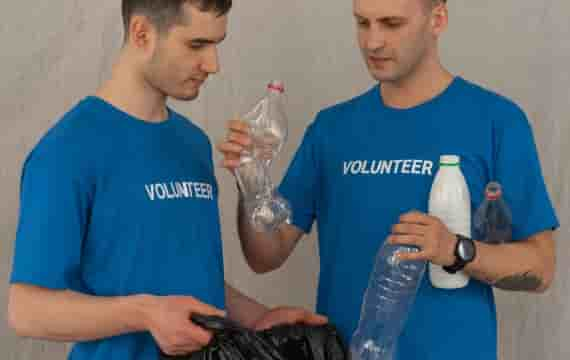Bio medical waste management
Let the waste of the “sick” not contaminate the lives of “The Healthy”
Bio – Medical Waste
Bio-medical waste is defined as waste that is generated during the diagnosis, treatment or immunization of human beings and are contaminated with patient’s body fluids (such as syringes, needles, ampoules ,organs and body parts, placenta, dressings, disposables plastics and microbiological wastes).

History
- In the late 1980’s
- Items such as used syringes washed up on several East Coast beaches USA
- HIV and HPV virus infection
- Lead to development of Biomedical Waste Management Law in USA
- However in India the seriousness about the management came into lime light only after 1990’s
Sources of Health Care Waste
Mission is Best Enviroment
Some People Need Help And We Give It!
Colour Coding and Type of Containers for different Bio-Medical Wastes

Rules concerned with Bio-Medical waste management
Whom?
The waste generator is Responsible for safe waste disposal.
Why Segregation?
A small portion of the waste generated from hospital is BMW. When it mixes with general waste, the whole waste becomes hazardous.
WHY BMW Rules?
Hospital or Lab/ Infectious waste is not dumped in open ground …. potentially hazardous to the environment and human beings
Where?
Waste should be segregated at the site of generation.
How?
Proper Collection, storage, Transportation, Treatment and disposal should be done.
Human tissues
Organs
Umbilical Cord
body parts
body fluids
cotton
dressings,
plaster casts,
lines, beddings,
Contaminated blood (placenta)
cell culture
Expired tablets & Medicines
Disposable contaminated waste which can be recyclable–will be disposed by autoclaving treatment followed by shredding
Tubing, bottles
Intravenous tubes and sets, catheters, urine bags
Syringes(without needles and fixed needle syringes) and
vacutainers with their needles cut and gloves
Tubing, bottles
Intravenous tubes and sets, catheters, urine bags
Syringes(without needles and fixed needle syringes) and
vacutainers with their needles cut and gloves
Scalpels
Blades
Needles
Syringes including sharp metals
Above Biomedical Waste has to be put into the hypochlorite solution container
Blades
Needles
Syringes including sharp metals
Above Biomedical Waste has to be put into the hypochlorite solution container
Glass bottles
ampoules
glass tubes
glass slides
Medicine Vials
Implant
ampoules etc
Tie Up with Common Bio Medical Waste Treatment Facilitators.
Get MoU
Should Renew MoU yearly once Use proper colour coded bins
Use Bar-coded bags only
Get MoU
Should Renew MoU yearly once Use proper colour coded bins
Use Bar-coded bags only
To provide a safe, ventilated and secured location for storage of segregated BMW within premises.
As per the Bio-Medical Waste Management (Amendment) Rules, 2018, use of chlorinated plastic bags (excluding blood bags) and gloves has to be phased out by the 27th March, 2019.
Provide training to all its health care workers and others involved in handling of bio medical waste at the time of induction and once a year thereafter and maintain records for the same.
Immunization against Hepatitis B and tetanus for workers.
Establish a Bar-Code System for bags or containers containing biomedical waste to be sent out of the premises by 27th march, 2019 as per the Bio-Medical Waste Management (Amendment) Rules, 2018.
Maintain and update the bio-medical waste management register daily and display the monthly and annual record on website.
Establish a Bar-Code System for bags or containers containing biomedical waste to be sent out of the premises by 27th march, 2019 as per the Bio-Medical Waste Management (Amendment) Rules, 2018.
Maintain and update the bio-medical waste management register daily and display the monthly and annual record on website.
Report major accidents like needle stick injuries, broken mercury thermometer, accidents caused by fire, blasts during handling of biomedical waste and the remedial action taken and record the same in Form I.
As per the Bio-Medical Waste Management (Amendment) Rules, 2018, use of chlorinated plastic bags (excluding blood bags) and gloves has to be phased out by the 27th March, 2019.
Provide training to all its health care workers and others involved in handling of bio medical waste at the time of induction and once a year thereafter and maintain records for the same.
Immunization against Hepatitis B and tetanus for workers.
Establish a Bar-Code System for bags or containers containing biomedical waste to be sent out of the premises by 27th march, 2019 as per the Bio-Medical Waste Management (Amendment) Rules, 2018.
Maintain and update the bio-medical waste management register daily and display the monthly and annual record on website.
Establish a Bar-Code System for bags or containers containing biomedical waste to be sent out of the premises by 27th march, 2019 as per the Bio-Medical Waste Management (Amendment) Rules, 2018.
Maintain and update the bio-medical waste management register daily and display the monthly and annual record on website.
Report major accidents like needle stick injuries, broken mercury thermometer, accidents caused by fire, blasts during handling of biomedical waste and the remedial action taken and record the same in Form I.
